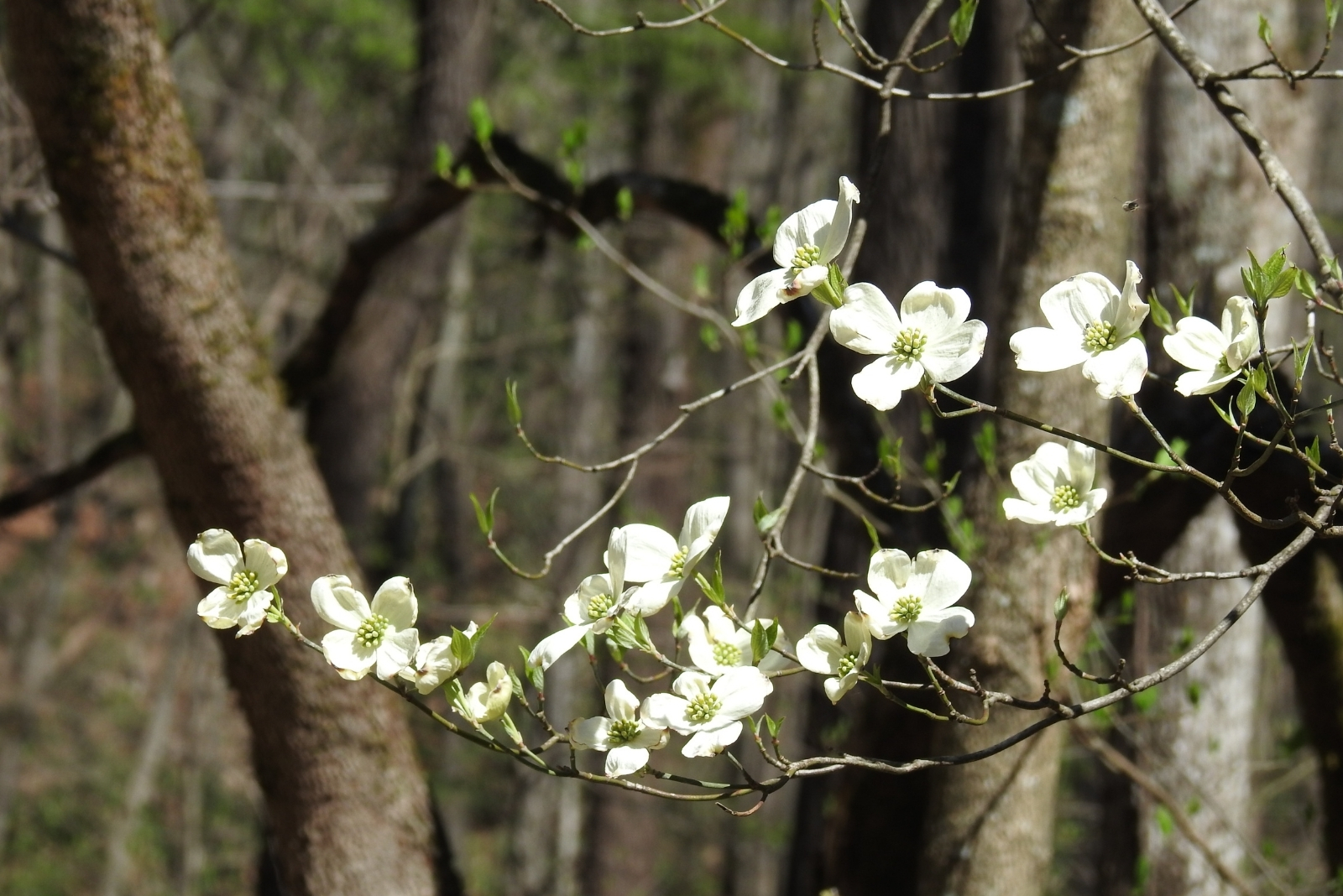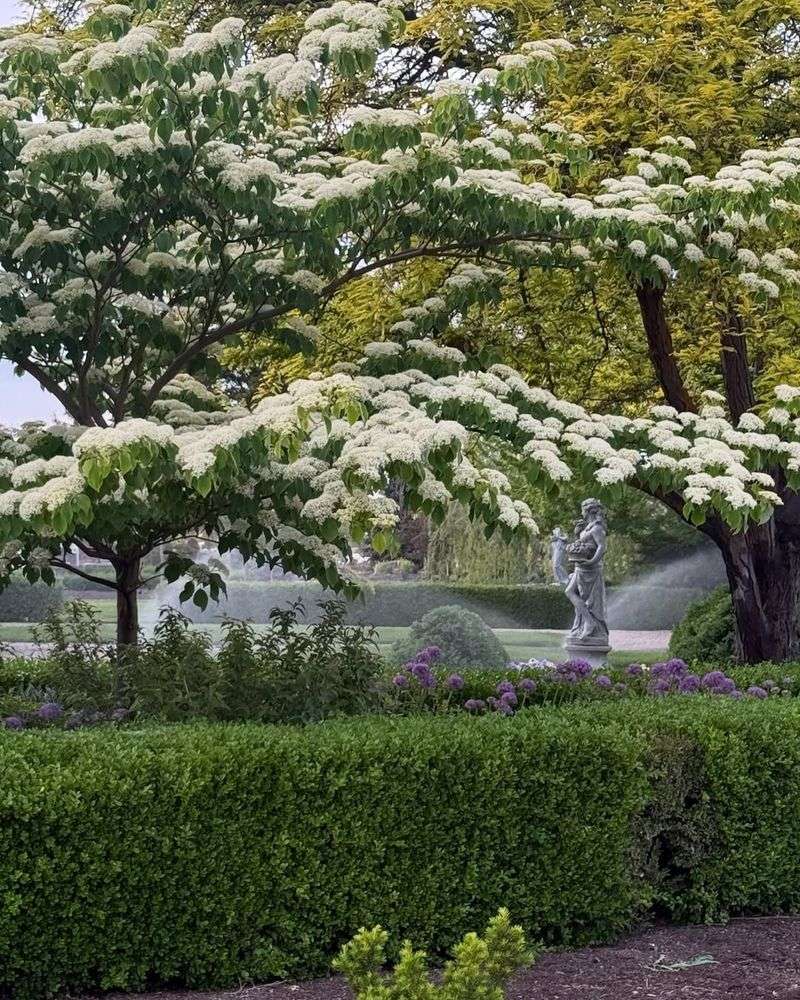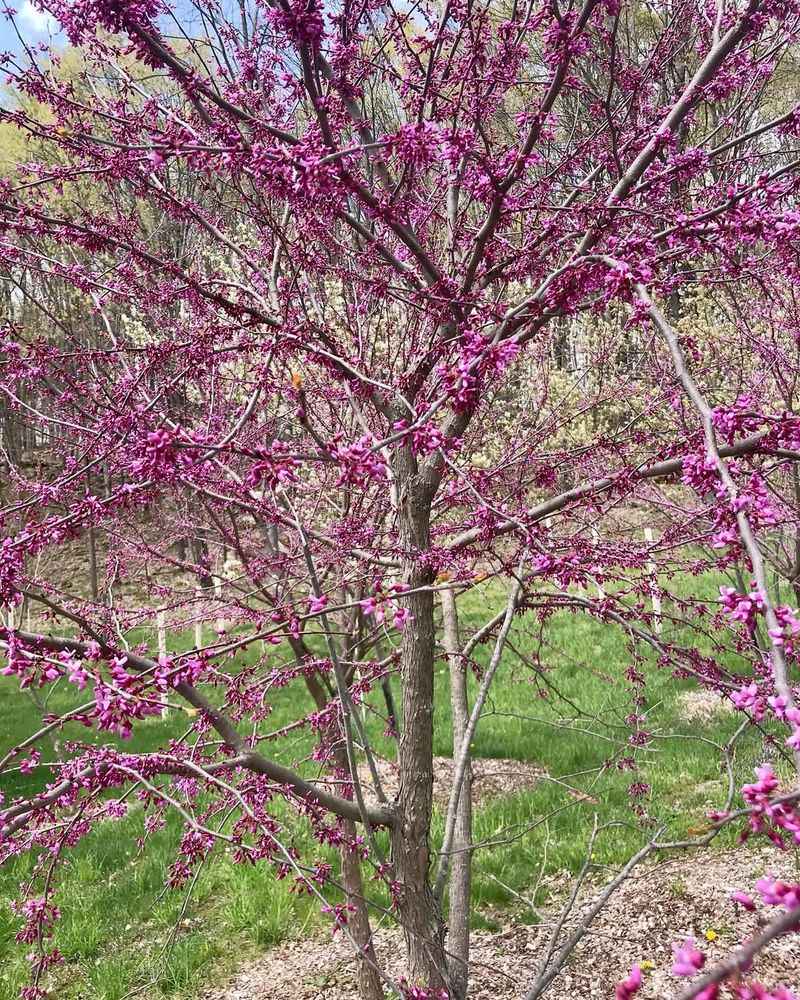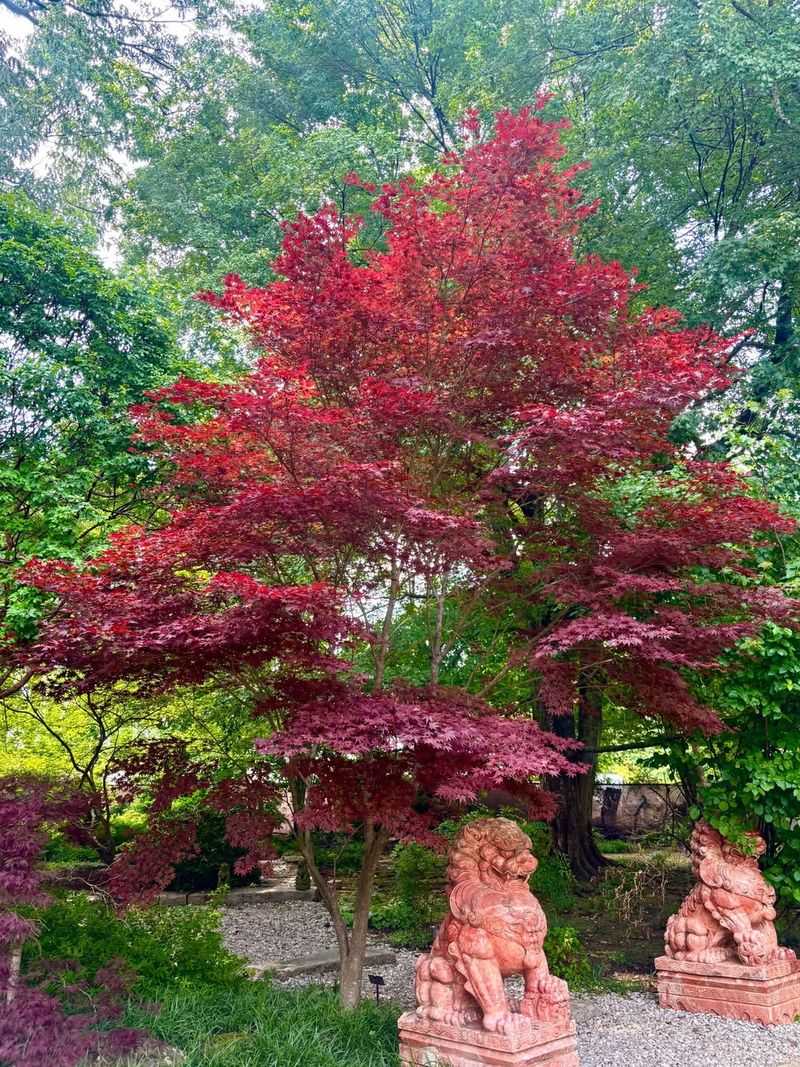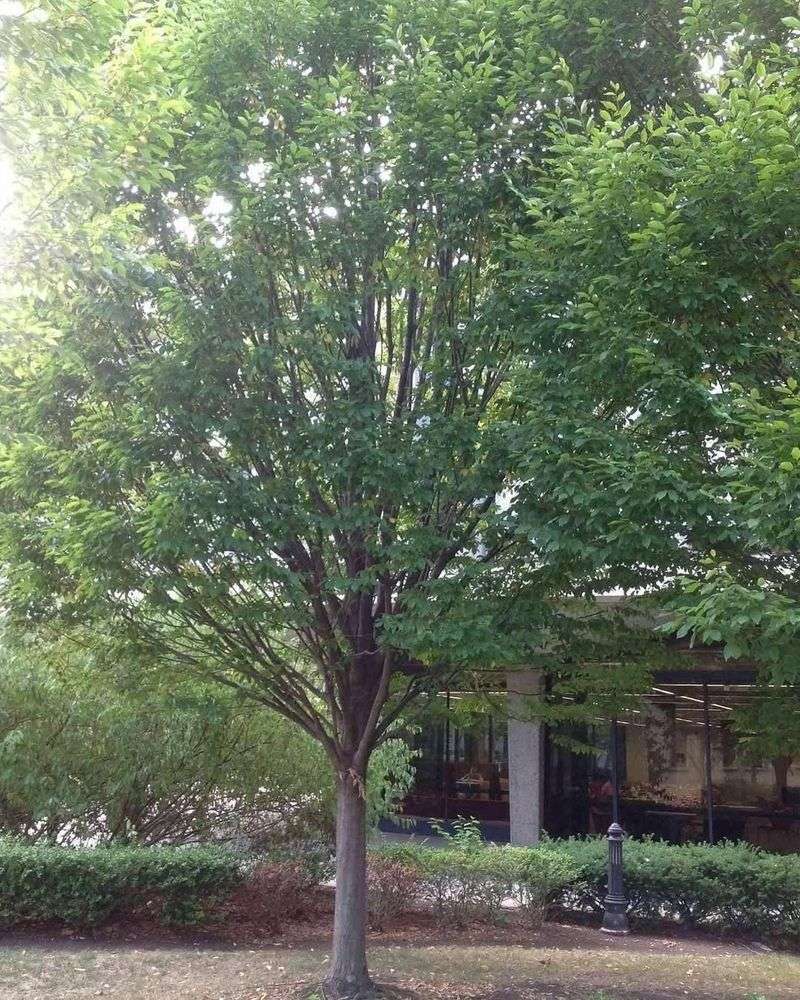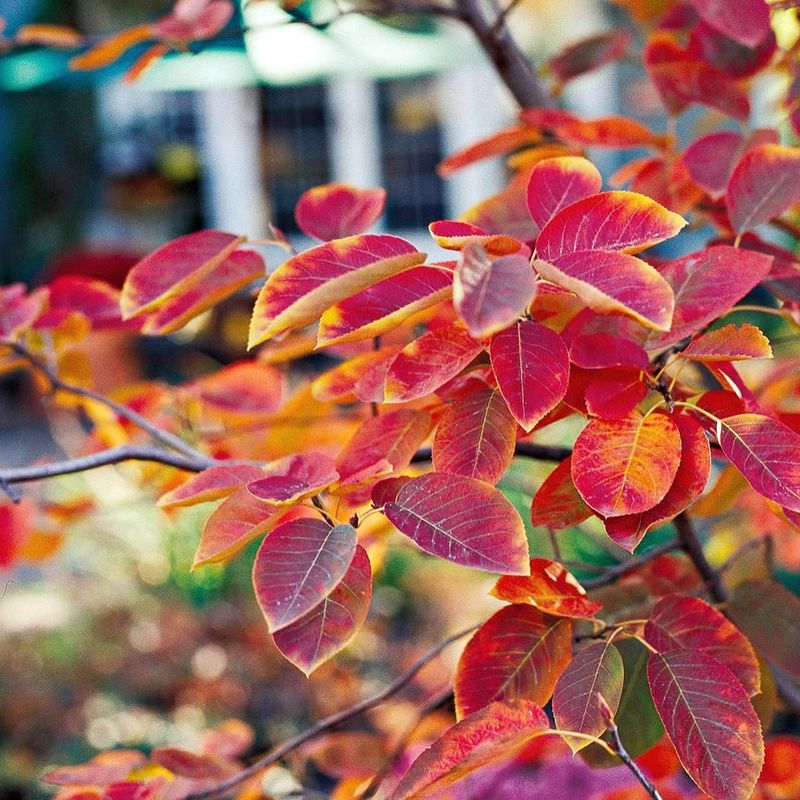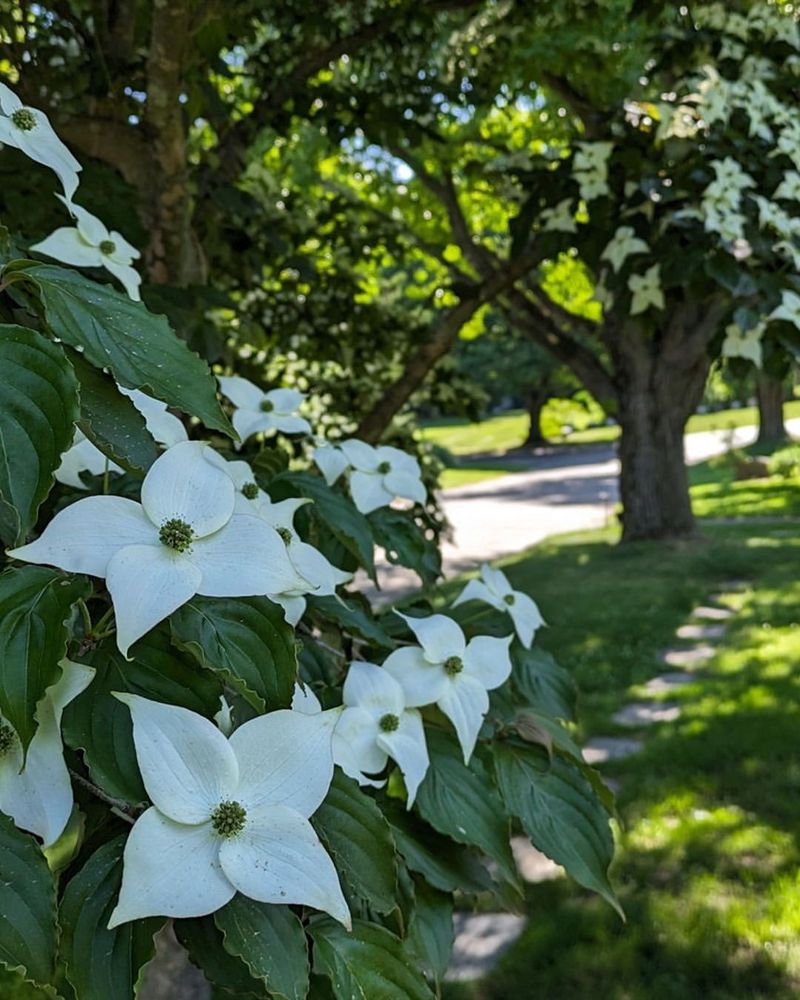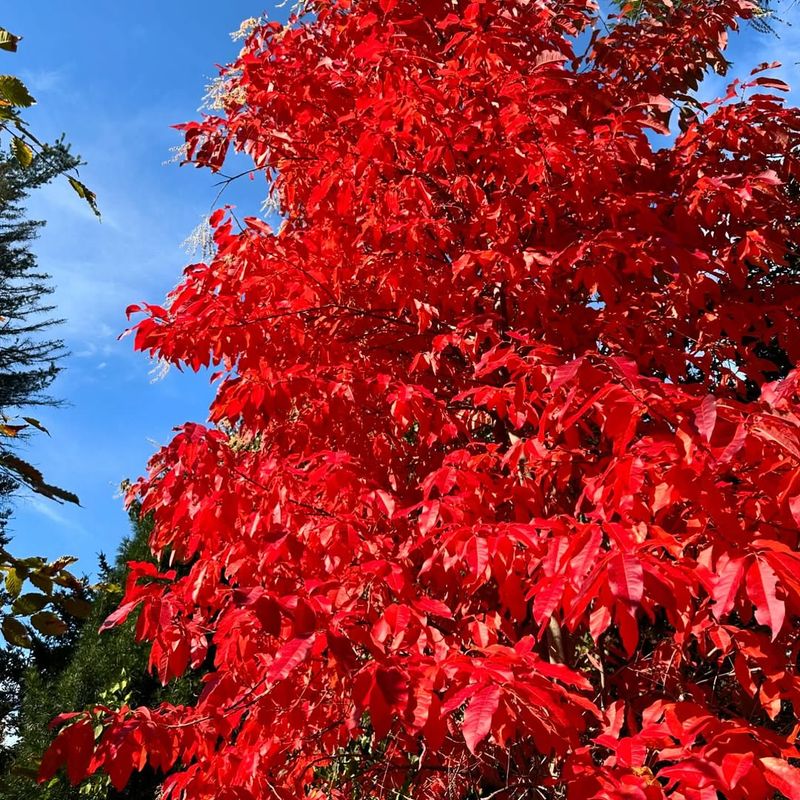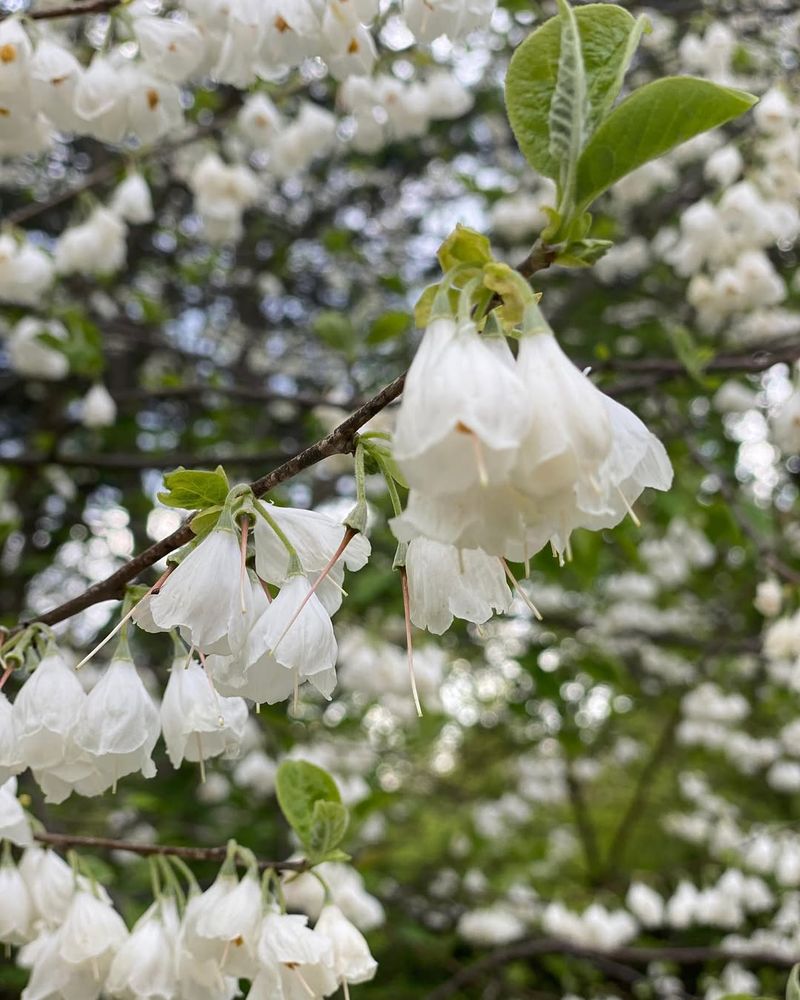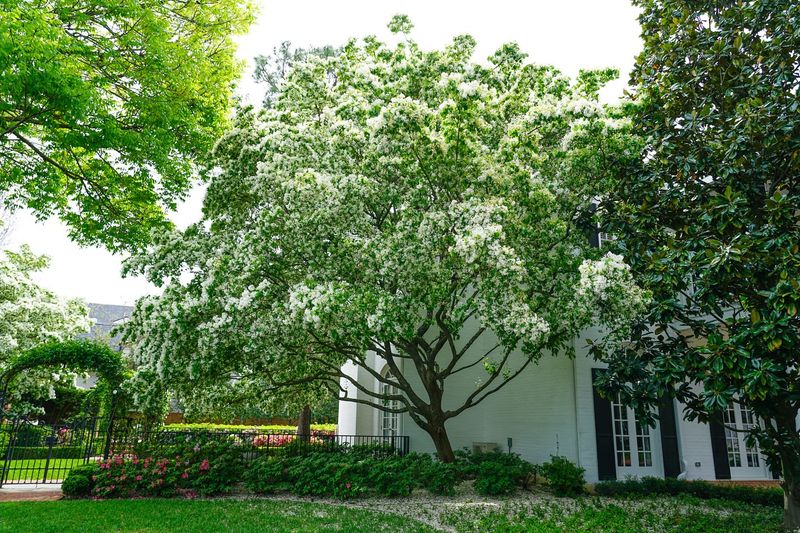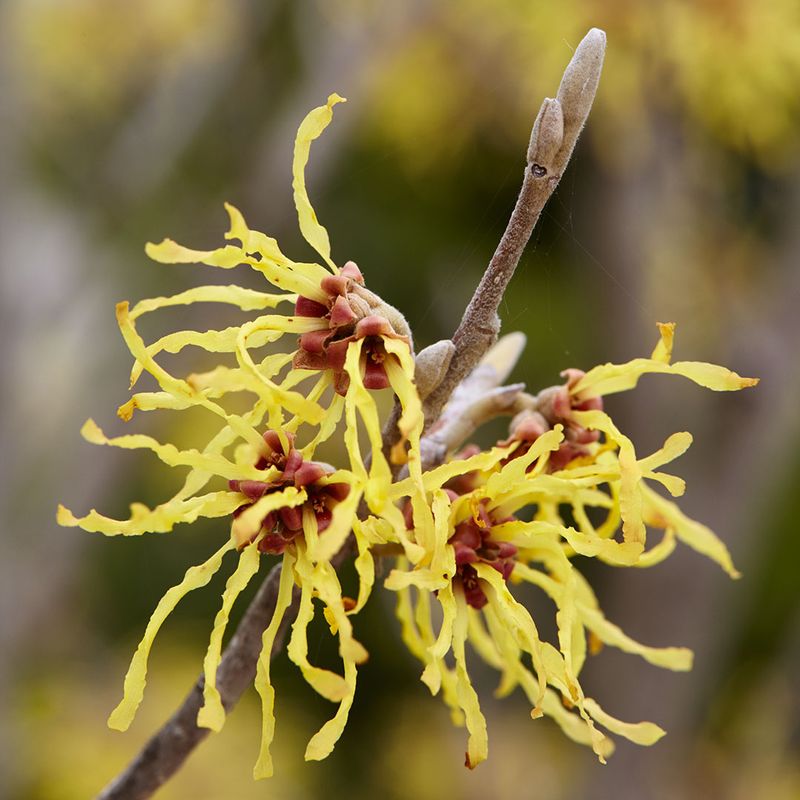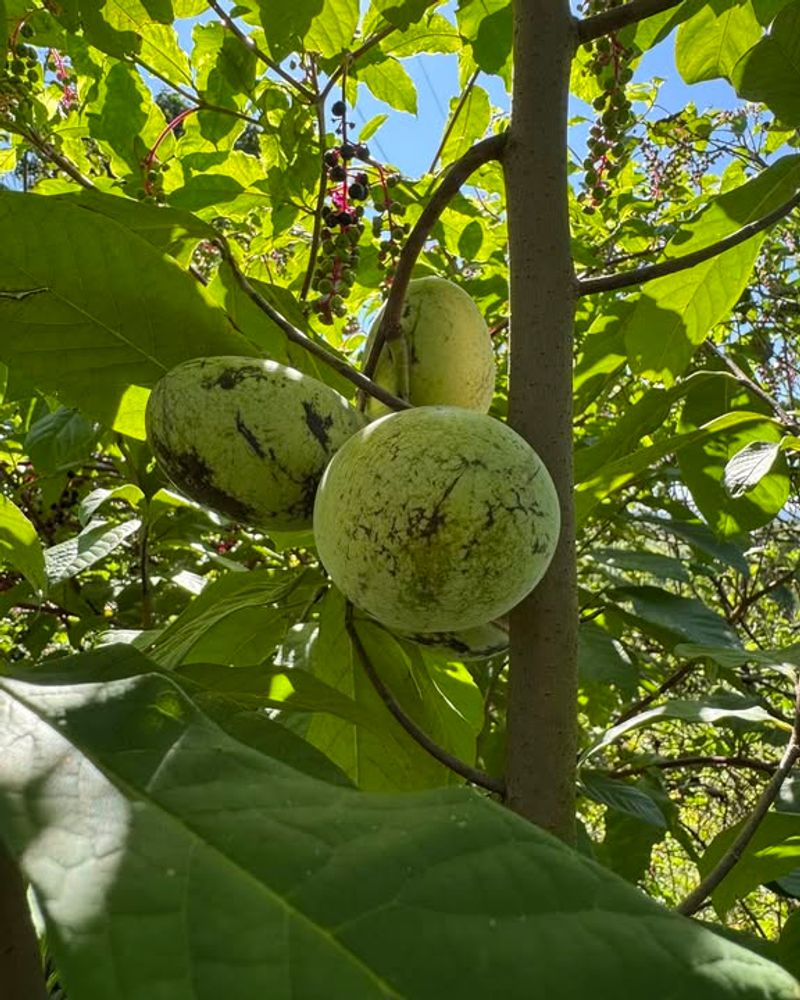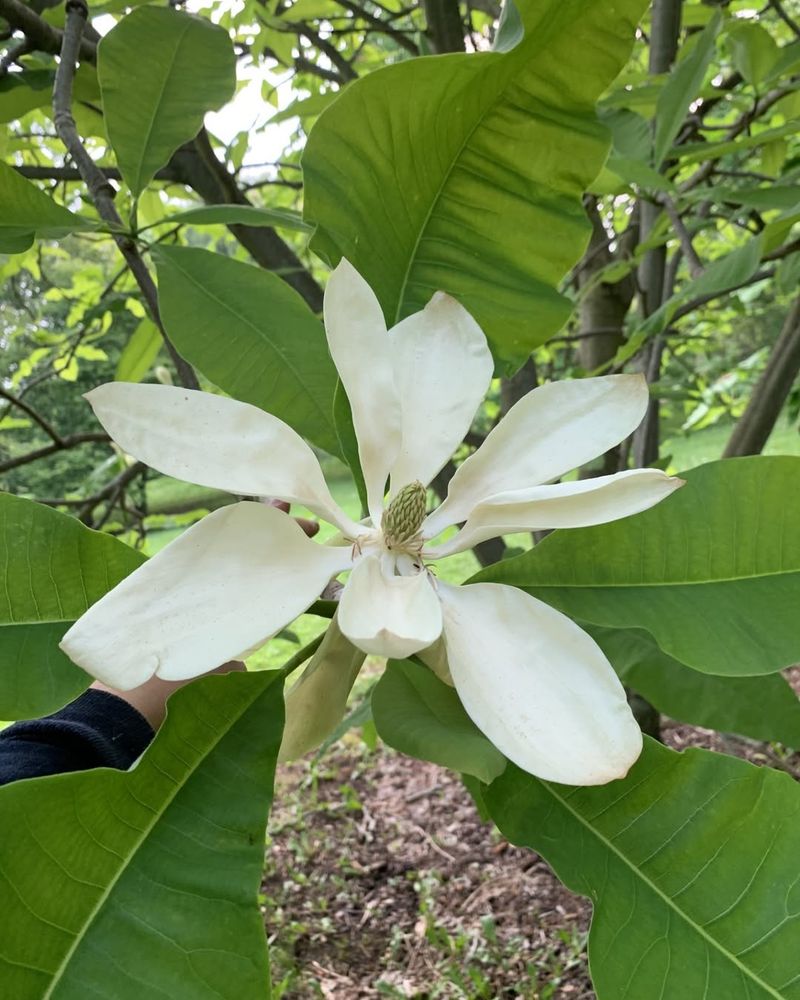Shady spots in North Carolina can feel tricky to fill, but the right small trees make all the difference. They bring height, texture, and sometimes flowers without demanding full sun.
Choosing wisely can turn a dim corner into a garden highlight. These trees are perfect for adding charm and interest where sunlight is limited.
1. Flowering Dogwood
Flowering dogwoods bring springtime magic to shaded yards across North Carolina with their stunning white or pink blossoms. Growing 15 to 30 feet tall, these native beauties adapt wonderfully to woodland settings.
Their horizontal branches create a graceful layered look that adds character year-round. Come autumn, the leaves transform into brilliant reds and purples, while bright red berries attract songbirds.
Plant them in partial shade with well-drained, slightly acidic soil for best results in your North Carolina landscape.
2. Eastern Redbud
Before most trees even wake up from winter, eastern redbuds explode with rosy-pink flowers that cover every branch. This North Carolina native reaches about 20 to 30 feet and tolerates shade remarkably well.
The heart-shaped leaves emerge after the blooms fade, creating a lovely green canopy through summer. Wildlife adores this tree—butterflies visit the flowers while birds feast on the seed pods.
Redbuds grow happily in partial shade and handle various soil types, making them incredibly easy to grow.
3. Japanese Maple
Few trees offer the artistic elegance of Japanese maples, with their delicate leaves and graceful form. Many varieties stay under 15 feet tall, perfect for smaller North Carolina gardens with limited sunlight.
Their lacy foliage comes in stunning colors—deep burgundy, bright green, or even variegated patterns. Morning sun with afternoon shade works wonderfully for these ornamental treasures.
Protect them from harsh winds and provide consistent moisture for the most vibrant leaf colors throughout the growing season.
4. American Hornbeam
Sometimes called musclewood because of its sinewy-looking trunk, American hornbeam brings unique texture to shaded North Carolina landscapes. This tough native grows slowly to about 20 to 30 feet tall.
Its smooth, gray bark resembles flexed muscles, creating winter interest when leaves drop. The tree produces dangling seed clusters that birds absolutely love.
Hornbeams thrive in moist, shaded areas where other trees struggle, making them ideal for those challenging wet spots in your yard.
5. Serviceberry
Serviceberry trees reward North Carolina gardeners with a triple treat—spring flowers, summer berries, and fall color. Growing 15 to 25 feet tall, they handle partial shade beautifully.
Delicate white blooms appear in early spring, followed by sweet purple berries that taste like blueberries. Birds compete with humans for these delicious fruits!
The leaves turn brilliant orange and red come autumn, providing a spectacular show. Plant them in moist, well-drained soil for the healthiest growth and best berry production.
6. Kousa Dogwood
Unlike their spring-blooming cousins, kousa dogwoods save their flower show for early summer in North Carolina gardens. These Asian natives reach 15 to 30 feet and resist diseases better than flowering dogwoods.
Their star-shaped white blooms have pointed tips that create an exotic appearance. Raspberry-like fruits dangle from branches in fall, attracting wildlife.
The exfoliating bark adds winter appeal, peeling away to reveal patches of tan and gray. Kousa dogwoods prefer afternoon shade and well-drained soil.
7. Sourwood
Sourwood trees earn their place in North Carolina landscapes with spectacular fall color that rivals any maple. Growing 25 to 30 feet tall, they tolerate partial shade while producing drooping chains of white flowers.
Bees create prized sourwood honey from these summer blooms. The leaves turn fiery shades of red, orange, and purple in autumn.
This native tree prefers acidic soil and consistent moisture, thriving in woodland settings. Its slender form fits nicely into smaller garden spaces without overwhelming the landscape.
8. Carolina Silverbell
Dangling like tiny bells, the white flowers of Carolina silverbell create an enchanting spring display in North Carolina’s shaded gardens. This native beauty reaches 30 feet but maintains a manageable size.
The bell-shaped blooms hang beneath branches, creating a magical effect when you look up. Four-winged seed pods add interest through summer and fall.
Silverbells naturally grow in mountain woodlands, so they adore partial shade and moist, acidic soil. Their understated elegance suits naturalistic garden designs perfectly.
9. Fringe Tree
When fringe trees bloom in late spring, they look like they’ve been draped with white lace across North Carolina landscapes. Growing 12 to 20 feet tall, they work wonderfully in shaded spots.
The fragrant flowers have thread-like petals that create a frothy, delicate appearance. Dark blue fruits follow the blooms, attracting songbirds throughout summer.
Both male and female trees exist, though females produce more fruit. Plant them in partial shade with moist soil, and watch them become a conversation piece.
10. Witch Hazel
Blooming when everything else sleeps, witch hazel brings unexpected color to winter gardens across North Carolina. These small trees reach 15 to 20 feet and thrive in shaded woodland conditions.
Spidery yellow, orange, or red flowers with a sweet fragrance appear from late fall through winter. The blooms withstand freezing temperatures without damage.
Native varieties offer brilliant yellow fall foliage before the winter flowers emerge. Witch hazels prefer moist, acidic soil and protection from harsh afternoon sun in North Carolina.
11. Pawpaw
North Carolina’s native pawpaw produces the largest edible fruit of any tree native to the United States. Growing 15 to 30 feet tall, these unusual trees love shaded understory positions.
Their large, tropical-looking leaves create a lush appearance uncommon in temperate gardens. The custard-flavored fruits ripen in late summer, tasting like a banana-mango blend.
Maroon flowers bloom in spring but often hide beneath the foliage. Plant multiple trees for better fruit production, and provide consistent moisture for the best harvest.
12. Umbrella Magnolia
With leaves reaching up to two feet long arranged in umbrella-like clusters, this North Carolina native makes a bold statement. Growing 15 to 30 feet tall, umbrella magnolias flourish in shaded woodland settings.
Large creamy-white flowers appear in late spring, measuring up to 10 inches across. The blooms have a pleasant fragrance that attracts beetles for pollination.
Cone-like seed pods turn pink in fall, adding ornamental value. These magnolias need moist, rich soil and protection from strong winds that might damage their impressive foliage.

